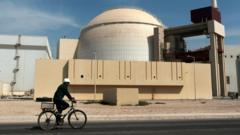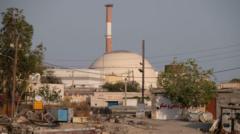Richard L. Garwin, a pivotal figure in nuclear physics, shaped a dangerous legacy as the designer of the hydrogen bomb while later dedicating his life to nuclear disarmament. His journey reveals the complexities and moral quandaries faced by scientists at the forefront of the nuclear age.
A Hidden Legacy: The Dual Life of Nuclear Physicist Richard Garwin

A Hidden Legacy: The Dual Life of Nuclear Physicist Richard Garwin
Richard Garwin's secretive past as the hydrogen bomb's designer contrasts sharply with his tireless advocacy against nuclear weapons.
Richard L. Garwin, a key architect of the hydrogen bomb, kept his vital role hidden from most, including his family, as he shifted his focus toward nuclear disarmament after reflecting on the consequences of his earlier work. Upon the death of his mentor, Enrico Fermi, Garwin felt compelled to advocate against the very dangers he once helped create. He passed away at 97, leaving behind a legacy not only of scientific achievement but also of deep personal conflict regarding the use of nuclear weapons.
Dr. Richard L. Garwin, who contributed to the design of the hydrogen bomb, navigated a complex legacy marked by both creation and caution. His work pushed the boundaries of modern physics, resulting in unprecedented explosive power, and yet he spent the latter part of his life alerting the world to the catastrophic consequences that could arise from nuclear proliferation.
Throughout his lifetime, Garwin grappled with the ethical implications of his work, emphasizing the responsibility of scientists to engage with public policy. His mentor, Enrico Fermi, lamented missed opportunities to influence public discourse, a sentiment that shaped Garwin's own views.
Despite the tremendous power that his designs afforded, Garwin carved a path toward activism and education, striving to guide future generations away from the horrors of nuclear conflict. His passing marks the end of a significant chapter in the history of nuclear science and disarmament advocacy, raising questions about the legacy scientists leave behind in a world still grappling with the shadows of the atomic age.
Dr. Richard L. Garwin, who contributed to the design of the hydrogen bomb, navigated a complex legacy marked by both creation and caution. His work pushed the boundaries of modern physics, resulting in unprecedented explosive power, and yet he spent the latter part of his life alerting the world to the catastrophic consequences that could arise from nuclear proliferation.
Throughout his lifetime, Garwin grappled with the ethical implications of his work, emphasizing the responsibility of scientists to engage with public policy. His mentor, Enrico Fermi, lamented missed opportunities to influence public discourse, a sentiment that shaped Garwin's own views.
Despite the tremendous power that his designs afforded, Garwin carved a path toward activism and education, striving to guide future generations away from the horrors of nuclear conflict. His passing marks the end of a significant chapter in the history of nuclear science and disarmament advocacy, raising questions about the legacy scientists leave behind in a world still grappling with the shadows of the atomic age.





















